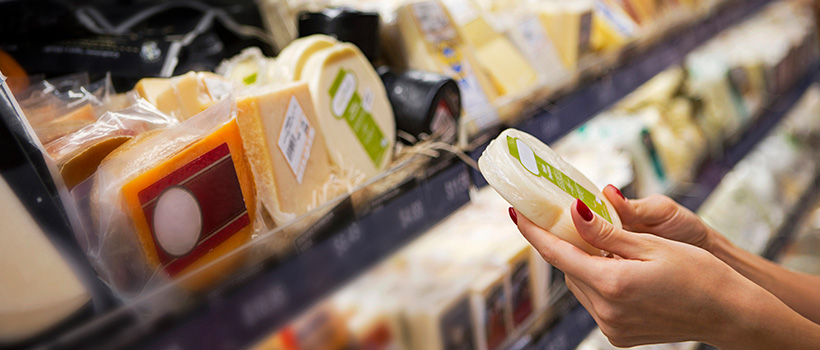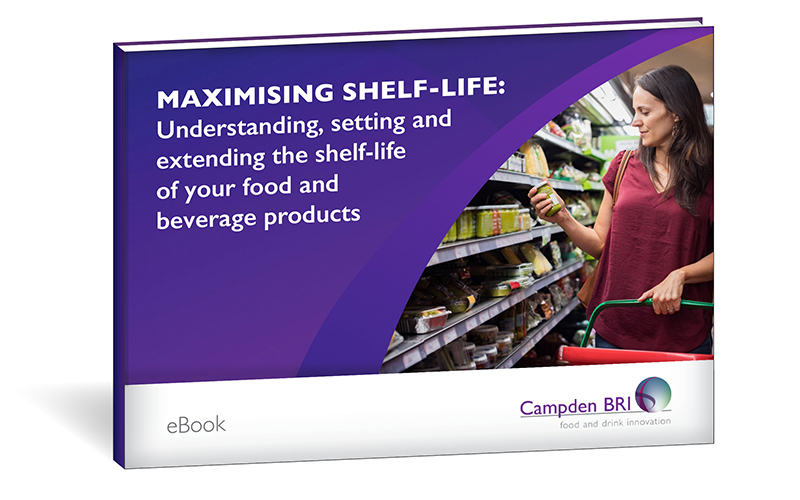
Things you need to consider when setting a shelf-life
14 July 2022 | Linda Everis, Section Lead
The shelf-life of a product is the time that it remains acceptable to eat. Within the shelf-life, the product will remain safe and retain the desired sensory, chemical, physical and microbiological characteristics.
Understanding shelf-life is essential in assuring the safety and quality of food and drink products
It’s important to re-evaluate shelf-life when products are reformulated because changing or reducing levels of salt, sugar or preservatives can all impact on shelf-life.
What influences shelf life?
Shelf-life is influenced by many aspects of good manufacturing practice and product formulation. Combinations of these factors are often used together to inhibit microbial growth, and so manage microbiological shelf-life. This is known as hurdle technology.
Download the complete Maximising Shelf-life eBook, for free, to unlock the tools for measuring and maximising the shelf-life of your food and drink products whilst ensuring their safety and quality.

Raw materials
Raw materials introduce microorganisms and sensory attributes to the final product. Variation in the raw materials will cause these attributes to vary in the product and may affect the shelf-life. For example, coleslaw made using freshly harvested cabbage will have a lower count of yeasts than cold-stored cabbage and therefore will have a longer shelf-life. It’s also important to consider if there are any in-house or external specifications you need to follow. You can find advice specifically on how to set microbiological criteria in Campden BRI Guideline 52.
Processing
All processing exerts considerable changes on the microflora and the chemical, biochemical and sensory properties of food. Small changes in one type of processing may have a large effect on the properties of the food and may be critical for shelf-life – for example, in cottage cheese, small changes in pH in the range 4.5-5.5 can significantly affect the types of spoilage microorganisms that can grow. More importantly, such changes would allow growth of pathogens should they survive the process or subsequently contaminate the product.
Product formulation
Intrinsic properties of the product such as pH, salt and water activity – that have been identified as critical to product stability – must be achieved in order to ensure that all product will achieve the shelf-life that is claimed for the product.
Storage and distribution
How a product is stored during both transport and retail display will greatly affect shelf-life. Storage temperature has the biggest effect, but light and humidity will also influence shelf-life. Customers may have different requirements for the temperature and duration that the product will be stored at. Therefore it’s possible that one product may need to have more than one shelf-life if the manufacturer has more than one customer.
Hygiene
Poor hygienic control may result in high levels of microorganisms being introduced to the product, which may have adverse effects on its safety and quality and thus affect its shelf-life – for example, poor cleaning of meat slicing equipment will increase microbiological counts and reduce the shelf-life of cooked meat.
Packaging
Modified gas atmospheres, introduced at the time of packing or developing on storage, will influence microbial growth and enzymatic and chemical reactions. Similarly, light, gas and packaging material permeability will influence the shelf-life.
Consumer handling
How the consumer purchases, stores and uses the product will affect the product’s shelf-life. For example, how long the product stays in the fridge in-store and conditions / time during transport to the consumer’s home. And once the product is taken home, how it’s stored - for example a juice may not be returned straight to the fridge, the carton may be left on the table for periods.
Conclusion
The shelf-life of food products is influenced by microbiological, chemical and sensory considerations and, in some cases, legislative requirements. Shelf-life needs to be determined by following sound scientific principles that take into account all the relevant formulation, manufacturing, distribution and storage factors. Assigning the correct shelf-life can be the key to the commercial success of a new product and should be done in the early stages of new product development.

About Linda Everis
Linda has a wealth of knowledge, experience and expertise from her time in Microbiological Analytical Services and Microbiology Safety and Spoilage. She joined Campden BRI in 1995 as a Senior Technician in the Microbiological Analytical Services group having graduated from the University of Wales Aberystwyth with a BSc in Biology.
Alongside the expert support that Linda provides to our members and clients, Linda conducts project work and research, and has been author and co-author of articles and papers for a variety of microbiological publications and Campden BRI reports.
Linda also lectures on shelf-life, challenge testing and predictive microbiology for our many training courses and seminars.
Download our FREE Maximising Shelf-life eBook today!
Explore different strategies to maximise and extend product shelf-life, without compromising safety or quality.
How can we help you?
If you’d like to find out more about how we can help with the self-life of your products, contact our Support Team.
This blog was first published in 25 July 2017






